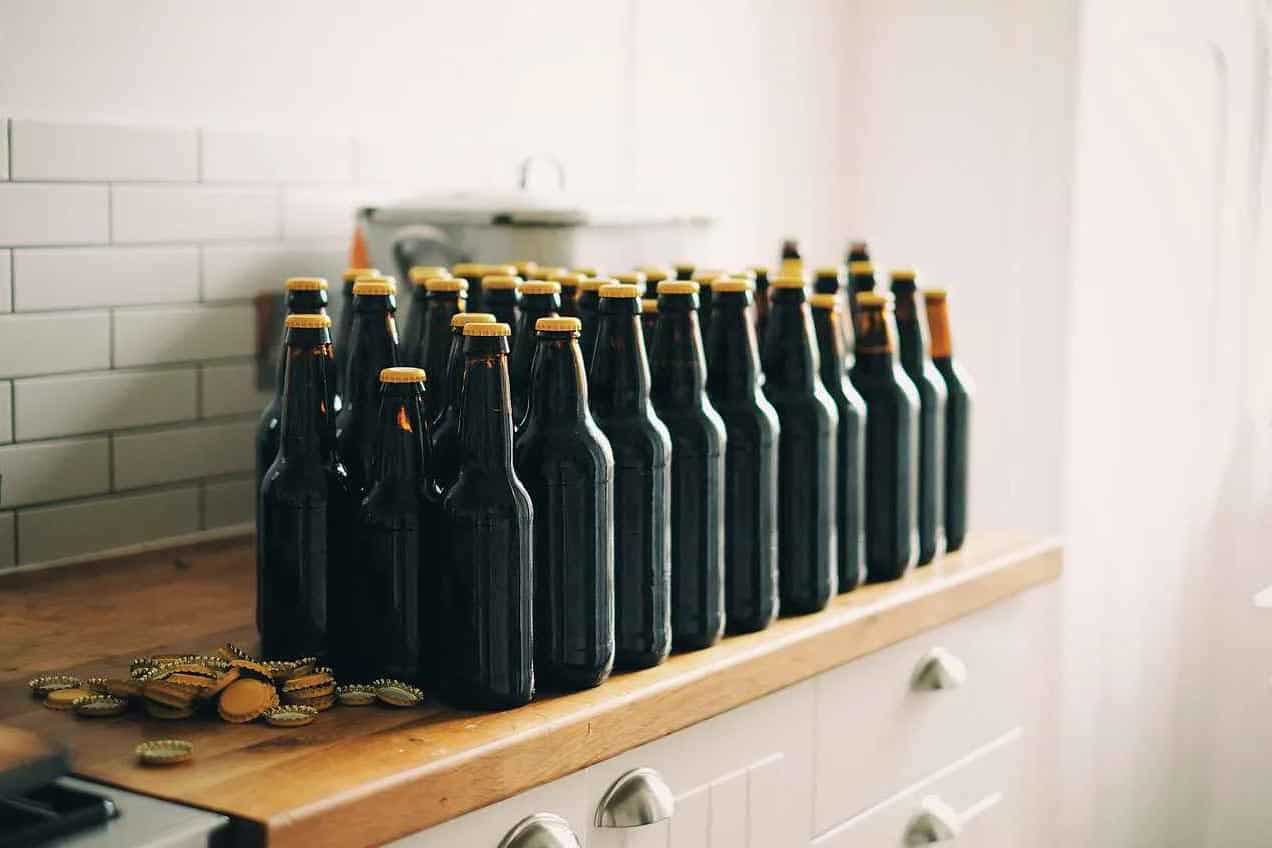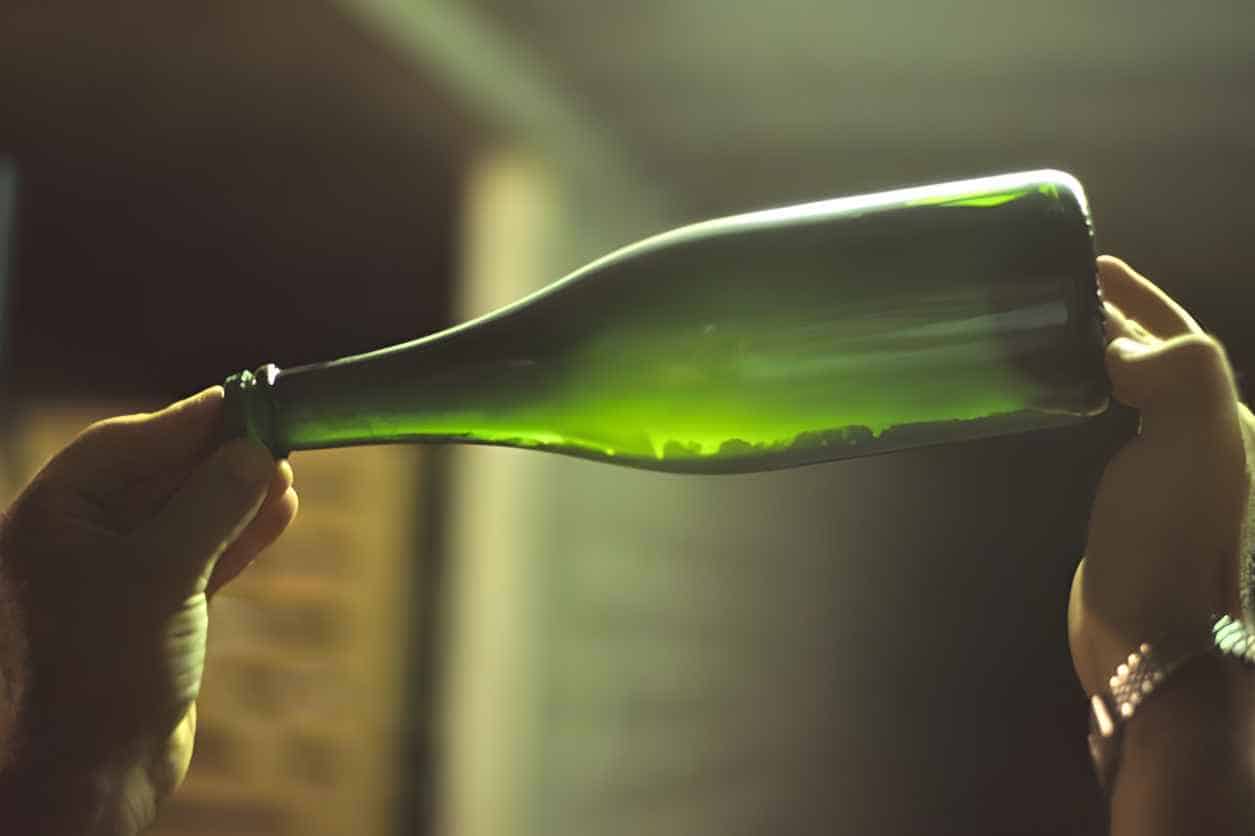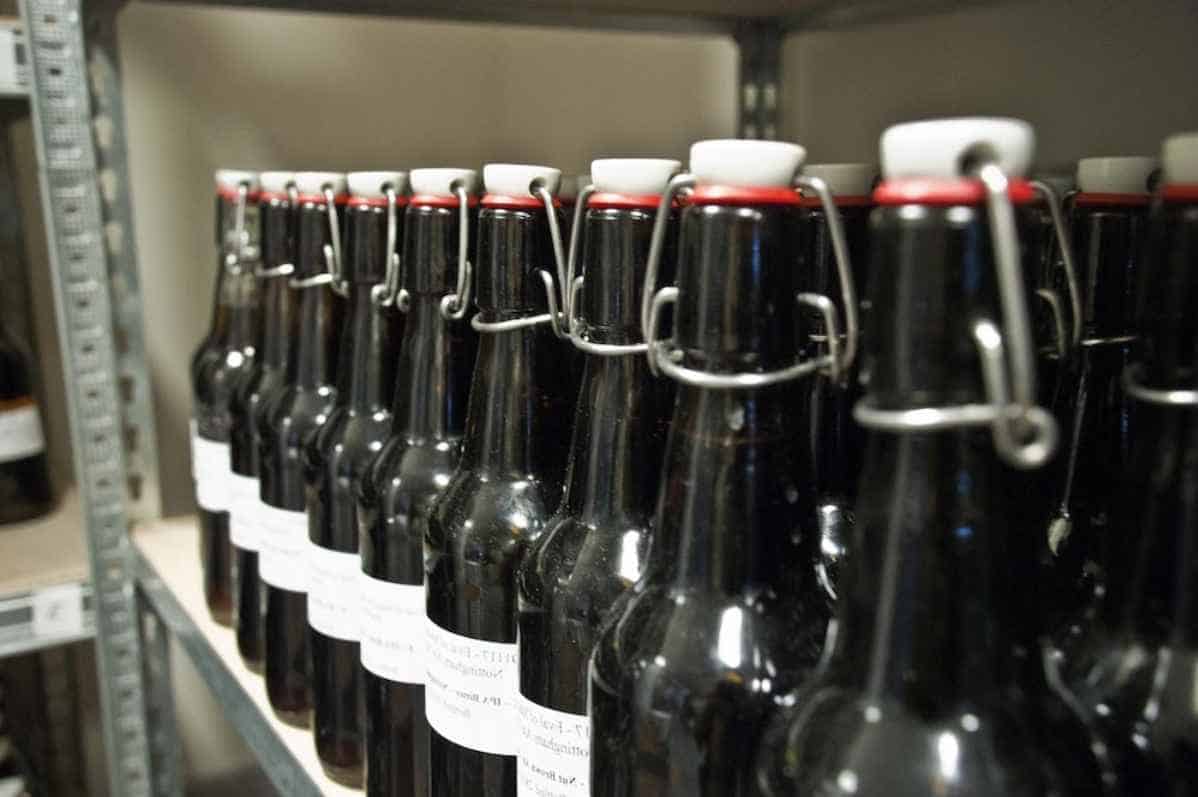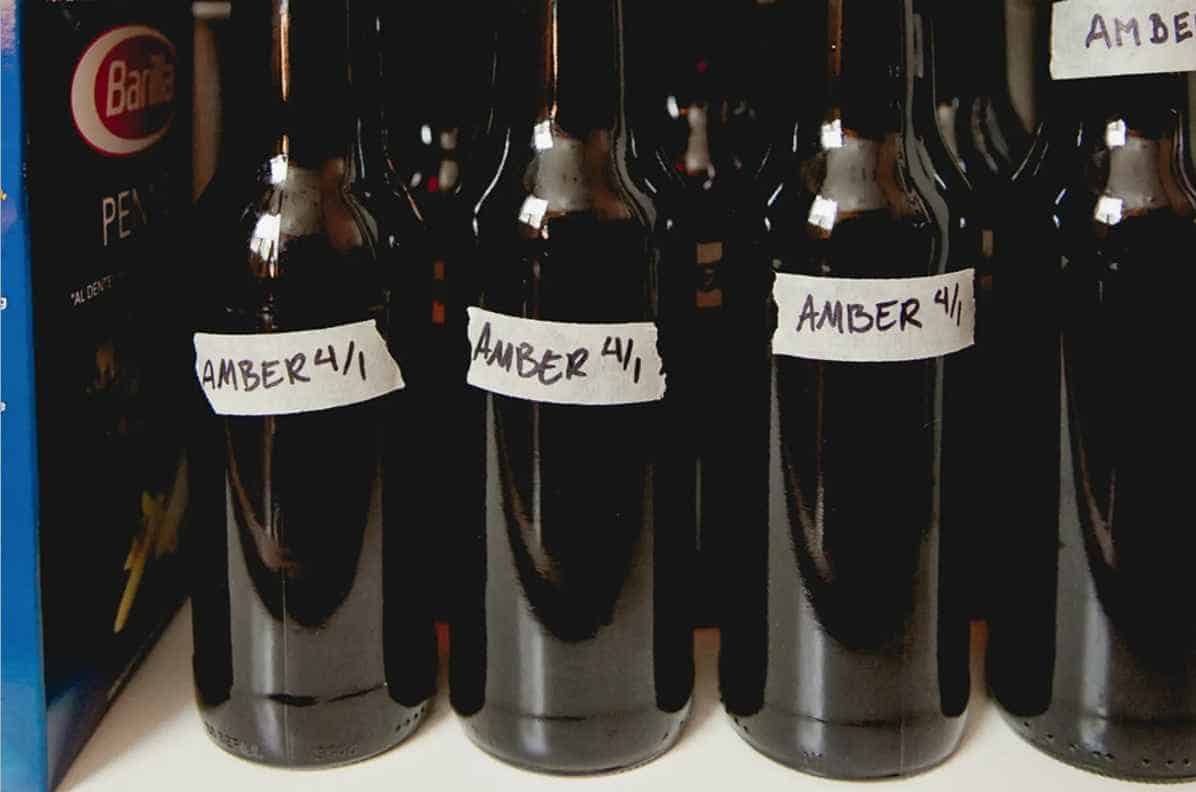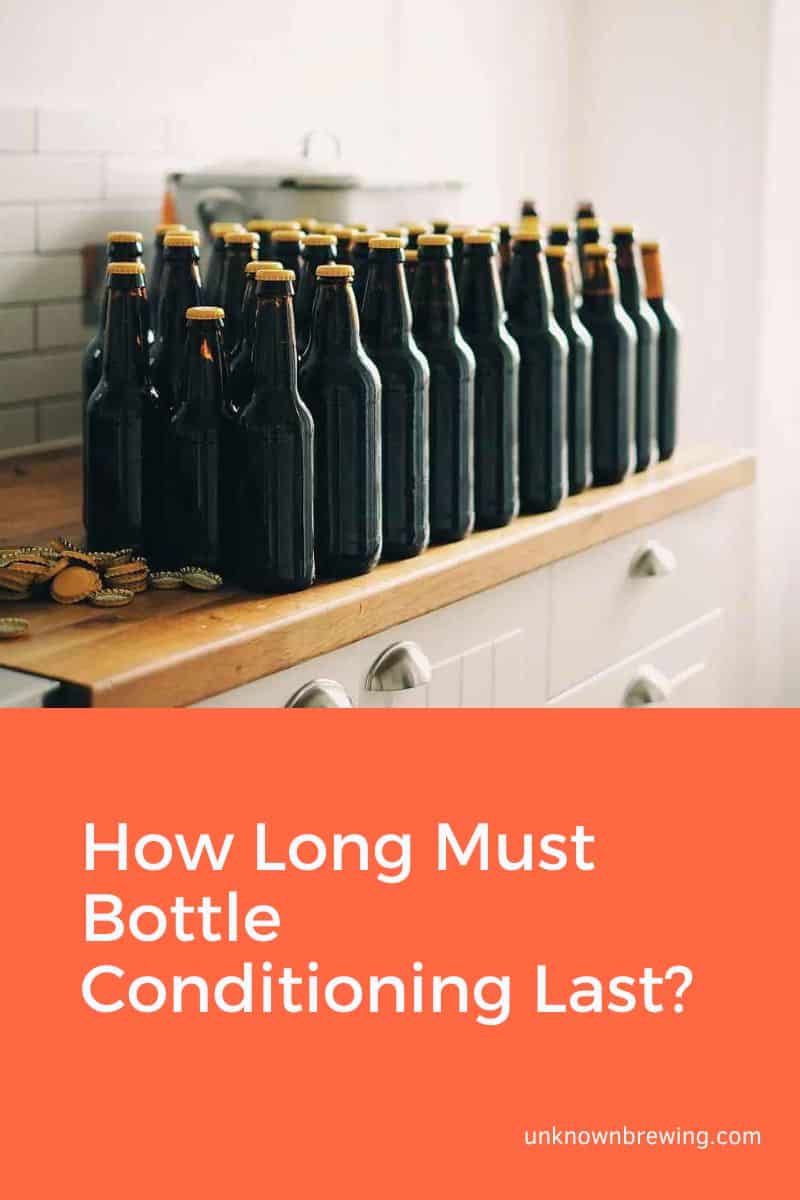Have you ever wanted to try brewing beer at home? Or are you just curious about how your favorite brew gets its bubbles? Whatever the reason, it pays to know how long to bottle condition beer.
Traditional brewers developed this technique to create a more natural and smoother fizz. This article can help you understand the process so you can make the perfect drink. It will surely quench your thirst and curiosity.
Quick reference of bottle conditioning times.
| Beer Style | Types | Usual Bottle Conditioning Period |
| Lagers | ● Oktoberfest
● Pilsner ● Light beers |
1-2 months |
| Dark beers | ● Stouts
● Imperial stouts ● porters |
3-6 months |
| Ales | ● IPA
● Pale Ale ● Imperial IPA |
2-4 weeks |
What Does Bottle Conditioning Mean?
Bottle conditioning is a natural beer carbonation method. It’s an age-old brewing procedure that utilizes a chemical reaction rather than machine carbonation. It involves adding yeast and sugar to the beer right before bottling.
Yeast produces carbon dioxide when it eats up sugar. Then the gas dissolves into the liquid, creating the familiar fizz beer drinkers love. It takes a lot of patience, though, since this process typically lasts a few weeks. For other beers, it can go for months. The good news is that it allows the beer to mature and develop complex flavors.
Why is bottle conditioning important?
Bottle conditioning is vital to beer brewing for several reasons:
For a more natural carbonation
Bottle conditioning uses yeast and sugar, all-natural ingredients, to add bubbles to the beer. It can be comforting knowing that the happy fizz you get from the beer is untouched by artificial intervention.
For flavor development
The beer’s distinct flavors and mouthfeel come from the yeast used for bottle conditioning. It produces esters and other compounds that can add depth and complexity to the beer.
For preservation
The yeast added during bottle conditioning can also help to preserve the beer. It consumes residual sugar and helps prevent spoilage from bacteria and other unwanted microorganisms. Yeast is way better than any harmful preservatives found in other drinks.
For tradition
Bottle conditioning is a time-honored method of carbonating and preserving beer. Its history dates back centuries. For many beer enthusiasts and traditionalists, bottle conditioning is essential to beer-making. It helps to maintain the authenticity and character of certain beer styles.
What are the factors influencing bottle conditioning time?
The following elements can affect how long bottle conditioning will take place:
Sugar concentration
The amount of sugar added to the beer can impact the fermentation rate. Adding more sugar will result in a faster process and a shorter bottle conditioning time.
Yeast strain
Different yeast strains will have different fermentation rates. Each one has a specific effect on the time required for bottle conditioning. Some yeast strains make fermentation go quickly, while others react more slowly.
Availability of Oxygen
Yeast needs oxygen for sugar fermentation. So an adequate supply of oxygen is essential. The yeast will struggle to ferment if there is not enough oxygen. It will result in a longer bottle conditioning time.
Alcohol content
High alcohol levels can lower the yeast’s efficacy. So a beer with high alcohol content may take longer to ferment and condition.
Residual yeast
The amount of residual yeast in the beer can also affect the duration of bottle conditioning. The beer may condition more quickly if there is a large amount of yeast. Meanwhile, it may take longer if there is very little yeast.
Temperature
The beer’s temperature during bottle conditioning can impact the yeast’s activity. Warmer temperatures can make fermentation faster. Conversely, cooler temperatures can make it slow.
What is the Standard Time for Bottle Conditioning?
As a rule of thumb, the lighter the beer, the less time carbonation time it needs. So, you’ll enjoy an IPA faster than stouts and lagers.
Check out some typical beer types and their ideal bottle conditioning times.
Lagers
Lagers are made from yeast that ferments at cooler temperatures. It has a crisp and clear flavor profile suited for many beer styles, including Oktoberfest, Light Beers, and Pilsners beers.
One common rule is to condition or “lager” a medium-strength beer for about a month. Then, for “bigger” beers (those with higher ABV), you must add one week for every five degrees OG (original gravity).
Bottle conditioning for regular lagers must not go beyond two months. Otherwise, it may exhibit off flavors or poor age character.
Dark Beers
Dark beers are a broad category of beers characterized by their dark hues. These rich colors usually result from roasted grains and dark malts. Some of the darkest beers include imperial stouts, stouts, and porters.
These beers require longer conditioning times. Imperial stouts and stouts need around 3-6 months. On the other hand, porters will be ready to drink in 4 months.
Ales
Ales come from a specific type of yeast that ferments at warmer temperatures. This yeast produces a range of flavors and aromas varying from fruity and spicy to earthy and floral. The common types of ales include pale ales, IPAs, and imperial IPAs.
Generally, most ales will reach optimal bottle conditioning in 2-4 weeks. However, some ale styles, such as Belgian ales, may benefit from a longer conditioning time of several months or even a year.
How Do You Know When Bottle Conditioning is Complete?
The following signs will tell you that bottle conditioning is complete. These are good indications that the beer is ready to be enjoyed.
Carbonation
A change in the beer’s carbonation level can show that the yeast’s conditioning process is complete. The beer should reach an ideal carbonated level dictated by the brewer.
Taste
How the beer tastes is an excellent indication of whether conditioning is complete. There should not be any unusual flavors. The desired flavor profile unique to the beer style must be present.
Settling
The yeast in the beer will settle to the bottom of the bottle once it has finished fermenting. It is a good indication that the conditioning process is complete if the yeast settles at the bottom.
Specific Gravity
You may use a hydrometer to measure the beer’s specific gravity. This measurement indicates whether the yeast has finished fermenting the sugars in the beer. The specific gravity must be stable for several days.
Please note that the exact time required for bottle conditioning can vary depending on the specific beer and the storage conditions. So it is best to use a combination of these signs to determine when the beer is ready.
Conclusion
Beermaking requires attention to detail. One element that you must focus on is the carbonation level. To achieve the optimal fizz, you must know how long to bottle condition beer. It’s a crucial step that contributes to the drinks’ overall enjoyment.

As a homebrewer, Michael would get frustrated about the lack of brewing information on the internet. After hundreds of gallons of spoilt batches, Micheal had enough. And he founded Unknown Brewing as a resource for homebrewers.
